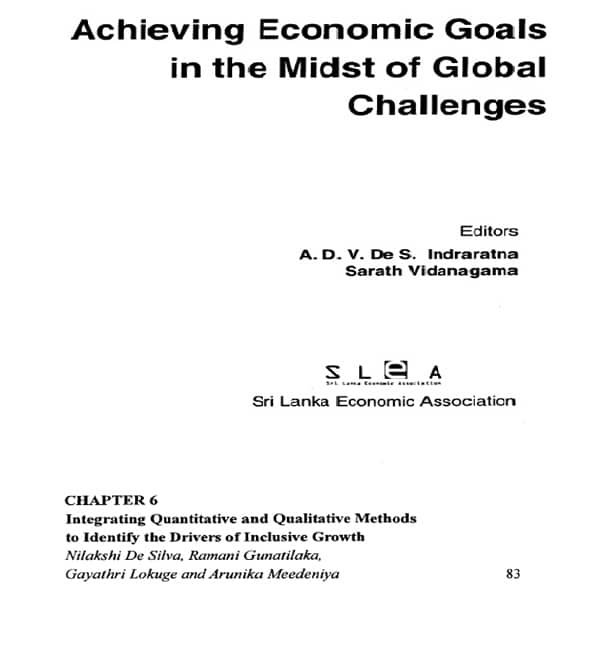Integrating Quantitative and Qualitative Methods to Identify the Drivers of Inclusive Growth

In Achieving Economic Goals in the Midst of Global Challenges
Description
CEPA Contributed to the SLEA Journal published in 2013 (Volume. 1, No.01, New Series, June 2013) by the Sri Lanka Economic Association.
“The study combines quantitative and qualitative analytical methods to identify the drivers of inclusive growth at district, community and household levels in Sri Lanka. The application of quantitative techniques such as the growth elasticity of poverty, growth incidence curves and the Oaxaca-Blinder decomposition to household expenditure data of 2002 and 2007, found that high rates of economic growth have been neither necessary nor sufficient for poverty reduction. Improved access to infrastructure, better education, the shift in employment from agriculture to the manufacturing and services sectors, and migrants’ remittances were key factors associated with consumption growth. Qualitative data collection and analysis confirmed these findings and highlighted factors such as favourable demand and price conditions, availability of speed capital for business in form of migrants’ remittances, milestone events such as marriage, and access to credit, previous work experience; individual effort and good social networks, as enabling households to participate in the growth process. Conversely, the lack of assets, poor educational attainment, high dependency ratios, poor health and alcoholism constrained others from doing so. The study highlights the importance of looking beyond national level data on growth and poverty reduction and undertaking more micro-level analysis to understand better who benefits and who loses from economic growth processes, and to design and target development strategies accordingly.
A printed copy is available for reference in the Library.